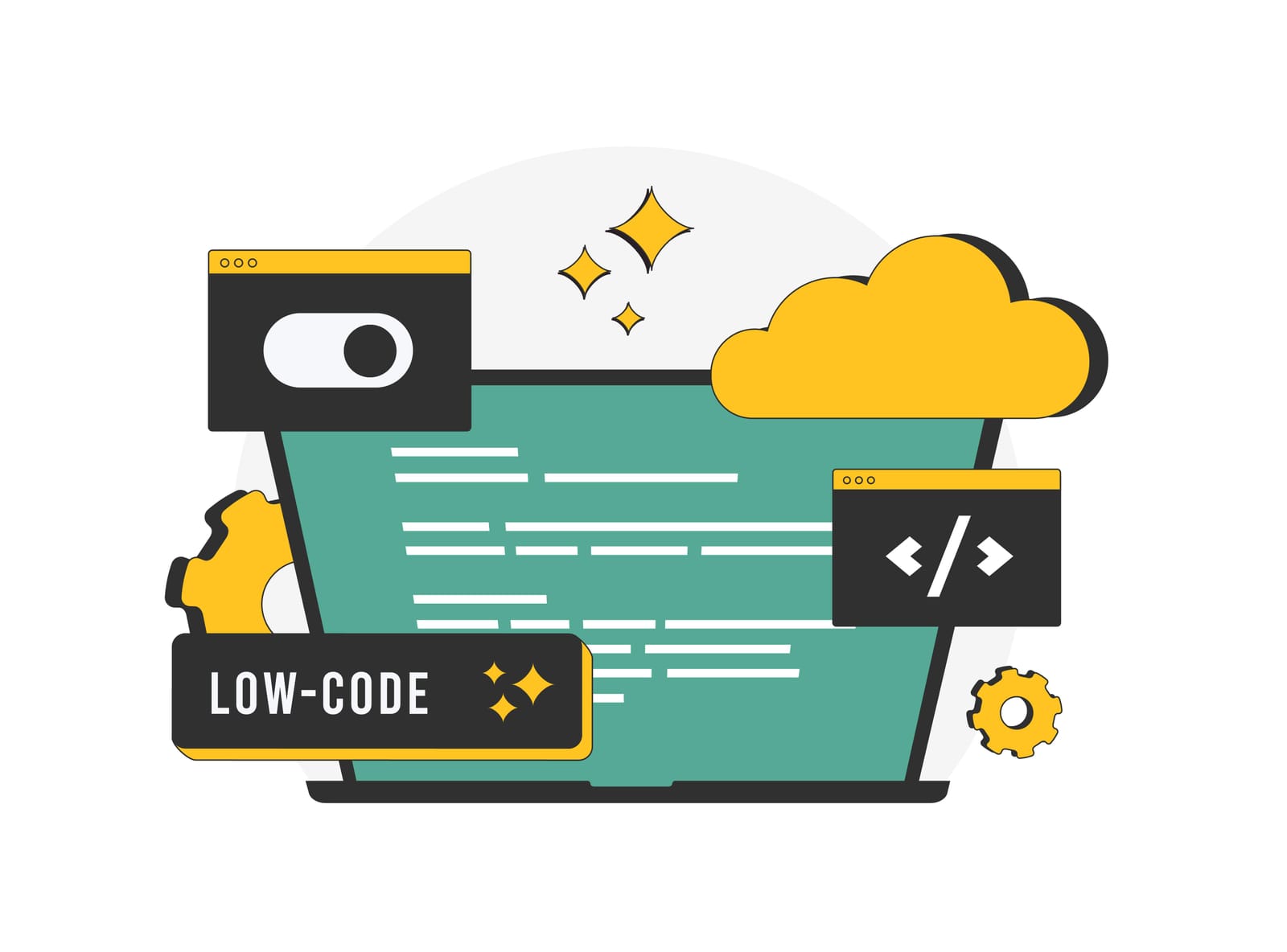How to Build Intelligent Bots with Low-Code Automation Solutions and Python
Businesses are always looking for smarter ways to streamline operations, cut costs, and enhance customer experiences. Digital transformation is no longer optional—it’s a strategic priority. One of the most exciting advancements fueling this shift is the rise of intelligent bots: AI-powered systems that go beyond basic automation to make decisions, handle repetitive tasks, and even interact with customers in natural, human-like ways.
Unlike traditional scripted tools, intelligent bots leverage artificial intelligence, machine learning, and natural language processing to understand context, learn from interactions, and improve continuously. Their impact spans industries—from finance and healthcare to retail and manufacturing—helping companies reduce manual work, minimize errors, and deliver faster, more personalized services.
What makes this moment especially powerful is accessibility. You no longer need a team of developers to build these systems. Thanks to visual low-code automation platforms and Python integration, businesses of all sizes can design intelligent bots using intuitive drag-and-drop interfaces combined with flexible scripting where needed. This shift is opening up automation to more teams, making innovation faster, cheaper, and easier than ever.
Understanding the Low-Code Advantage
Low-code platforms have revolutionized the way we approach software development and automation. Instead of writing thousands of lines of code, low-code business process automation tools provide visual interfaces where users can drag and drop components to create sophisticated workflows.
This approach significantly reduces development time and lowers the technical barrier to entry, allowing business analysts and subject matter experts to participate in the automation process.
The core strengths of low-code process automation platforms include:
- Visual Development Environment: Most tools offer intuitive interfaces where users can design processes visually. This makes it easier to understand the flow and logic of an automated process, even for non-technical stakeholders.
- Pre-built Components: These platforms often come with libraries of pre-configured components for common tasks such as data transformation, API calls, document processing, and user interactions.
- Built-in Connectors: Many include ready-made connectors to widely used business systems like CRM, ERP, and databases, reducing the complexity of integration.
- Quick Deployment: With low-code automation, solutions can be deployed quickly, allowing businesses to realize value much faster than with traditional development cycles.
As low-code continues to evolve, many platforms are now embracing integration with general-purpose programming languages to enhance flexibility and power. Among these, Python stands out as a perfect complement, extending low-code automation with intelligent capabilities like machine learning, data analytics, and natural language processing.

Adding Intelligence with Python
Python has become the go-to language for data science, machine learning, and artificial intelligence, technologies that can transform a basic bot into a truly intelligent automation solution. Its clean, readable syntax makes it accessible for beginners, while its rich ecosystem supports even the most advanced use cases.
When enhancing low-code business process automation, Python provides several key advantages:
- Rich Ecosystem: Python offers powerful libraries for machine learning, natural language processing, and data-driven decision-making. These can be used to build bots capable of predictive analytics, text understanding, and intelligent responses.
- Data Processing Capabilities: Python is exceptionally strong in handling and transforming data, an essential aspect of any intelligent automation project. Tools for data manipulation make it easy to extract, clean, and prepare data for analysis.
- Accessibility: With a lower learning curve compared to many other AI-focused languages, Python enables both developers and technically inclined business users to create advanced functionality without deep software engineering expertise.
- Community Support: A vast and active community means developers can quickly find solutions, libraries, and best practices, accelerating development and troubleshooting.
Integrating Python into low-code automation environments can be approached in a few different ways. One common method is API integration, where Python code is deployed as microservices or web endpoints that can be called by the low-code platform. This keeps the logic modular and easy to maintain.
Another option involves using custom modules—some platforms allow embedding Python scripts directly into the workflow, enabling more control over process logic.
Finally, cloud-based serverless functions provide a scalable solution: Python code can be executed on demand through services that require no dedicated infrastructure, supporting dynamic workloads and event-driven automation.
By combining Python’s intelligence with the simplicity of low-code, organizations can create powerful, adaptable bots that go well beyond basic automation.
Adding Intelligence with Python
Building an intelligent bot using low-code and Python requires thoughtful planning and implementation. Here’s a roadmap to guide you through the process:
1. Planning Your Intelligent Bot
Start by identifying the right business process for automation. The ideal candidate should be:
- Repetitive and rule-based at its core
- Time-consuming when performed manually
- Structured enough to be automated but complex enough to benefit from intelligence
Next, define the intelligence requirements for your bot:
- Does it need to understand natural language?
- Will it need to make predictions or recommendations?
- Should it learn and improve over time?
- How will it handle exceptions and edge cases?
Based on these requirements, select the appropriate technology stack. Consider:
- Which low-code automation platform best integrates with your existing systems?
- What Python libraries and frameworks will you need?
- Where will your solution be hosted?
2. Building the Foundation with Low-Code
To begin, implement the core process flow using your chosen low-code platform. Start by mapping the process, utilizing the visual designer to create a comprehensive map of the business process. This should include all steps, decision points, and possible paths.
Next, configure connections to all relevant data sources and business systems that your bot will interact with. Following this, create the user interfaces, designing necessary forms, notifications, or chatbot interfaces if your bot will interact with humans.
Then, implement the basic logic by adding conditions, loops, and other control structures to handle the procedural aspects of your process.
At this stage, you’re building what could be considered a “smart” bot, though not yet “intelligent.” It can follow rules and procedures, but it lacks the cognitive capabilities that Python will provide.
3. Developing Python Components
Now, develop the Python modules that will add intelligence to your bot:
- Data processing pipeline: Create scripts to clean, transform, and prepare data for analysis.
- Machine learning models: Develop and train models that can make predictions or classifications based on your data.
- Natural language components: If needed, implement NLP components for understanding text input, sentiment analysis, or generating human-like responses.
- Decision engines: Build algorithms that can make complex decisions based on multiple inputs and criteria.
During development, it’s important to follow best practices. Your code should be modular and reusable to support future updates and scalability. Thorough documentation will help others understand and maintain your work.
Make sure to implement robust error handling and logging to assist with troubleshooting. To ensure reliability, include unit tests that validate your components under various conditions.

4. Integration and Deployment
Once both the low-code process and Python components are ready, it’s time to integrate them. Start by exposing the Python functionality by deploying your Python components as APIs, serverless functions, or custom modules, depending on your platform’s capabilities. Then, connect the low-code platform by adding the necessary steps in your workflow to call the Python components at the appropriate points.
Next, ensure that data can flow smoothly between the low-code platform and the Python components, paying attention to data formats and structures. Implement error handling by adding logic to manage situations where the Python components might fail or return unexpected results.
Afterward, conduct thorough end-to-end testing, covering all possible paths and edge cases. Once testing is complete, you can deploy your solution to production. This includes setting up monitoring to track the performance and health of both the low-code components and Python services, creating feedback mechanisms to collect insights on the bot’s performance for future improvements, and documenting the solution comprehensively for both users and maintenance teams.
5. Optimization and Evolution
After deployment, focus on optimizing and evolving your intelligent bot:
- Performance tuning: Identify and address any bottlenecks in your process or Python code.
- Model retraining: Set up a schedule for retraining machine learning models to ensure they remain accurate as conditions change.
- Feature expansion: Based on user feedback, add new capabilities to your bot over time.
- Process refinement: Continuously look for ways to improve the underlying business process.
Common Challenges and Solutions
Building intelligent bots with low-code automation and Python isn’t without challenges. Here are some common issues and strategies to address them:
- Data Quality Issues: Intelligent bots are only as good as the data they work with. Implement robust data validation and cleaning procedures both in your low-code platform and Python components.
- Integration Complexity: Moving data between systems can be tricky. Use standard formats like JSON for data exchange and implement clear contracts between components.
- Performance Concerns: Python may not be the fastest language for certain operations. Consider using optimized libraries or rewriting critical sections in faster languages for performance-critical components.
- Governance and Security: As bots become more intelligent, governance becomes more important. Implement proper access controls, audit trails, and monitoring to ensure your bots behave as expected.
Conclusion
The combination of visual development platforms and Python creates a powerful approach to building intelligent bots that transform business processes. By following the implementation approach outlined here, organizations can create sophisticated solutions without the extensive time and expense traditionally associated with custom development.
This democratization of intelligent technology opens new possibilities for businesses of all sizes to improve efficiency, reduce costs, and enhance customer experiences. As these tools continue to evolve, we can expect increasingly sophisticated bots that blur the line between simple process handling and true artificial intelligence.
Start your journey today by identifying a business process that could benefit from intelligent bots, and take the first steps toward transforming your operations with these powerful technologies.